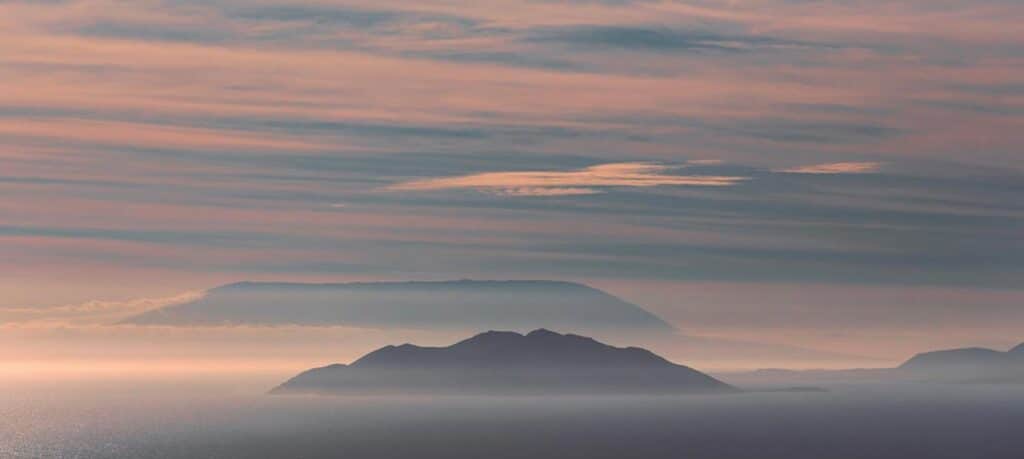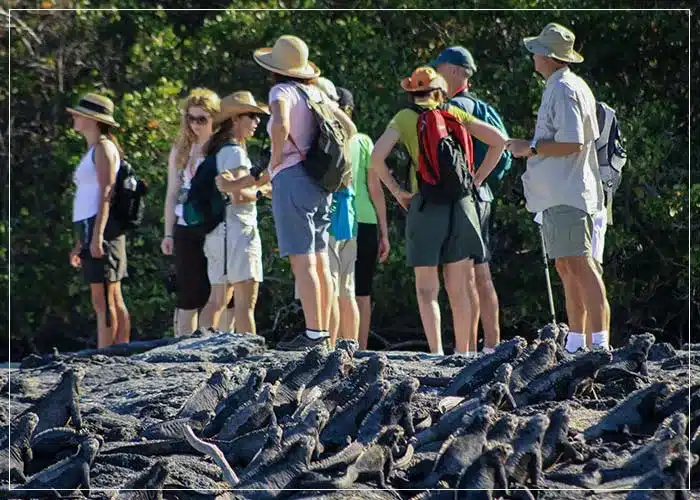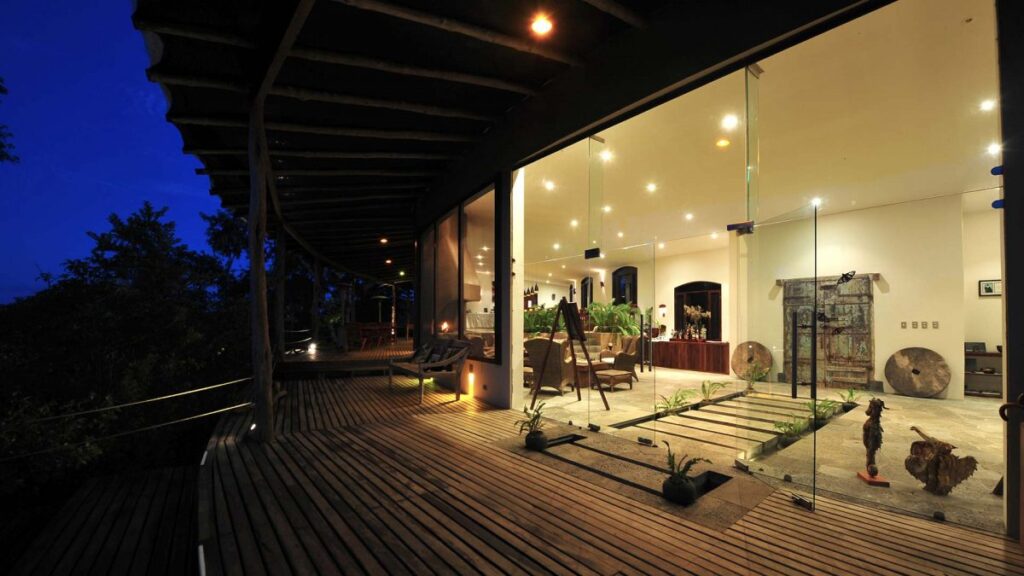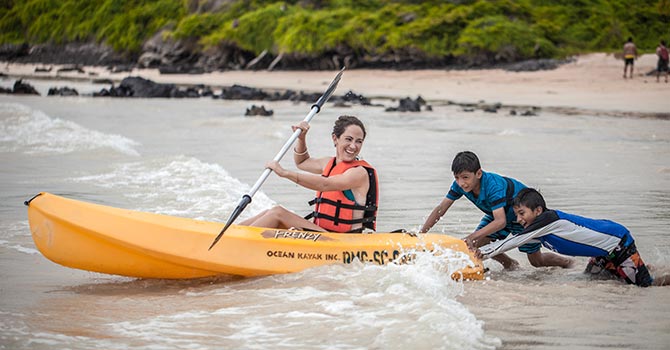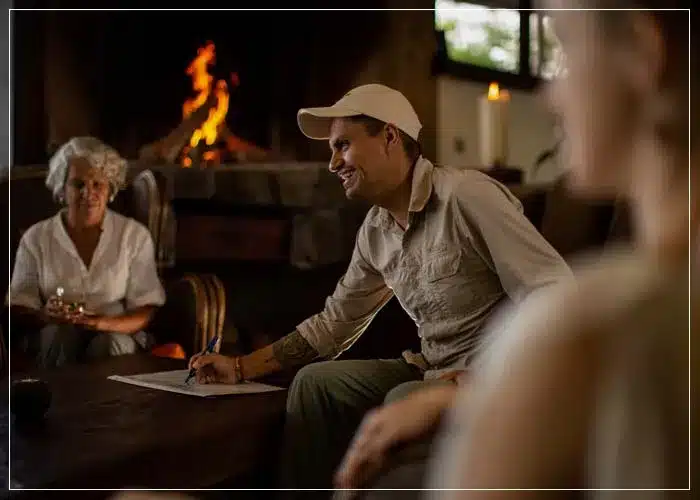General Information about the Galapagos Islands
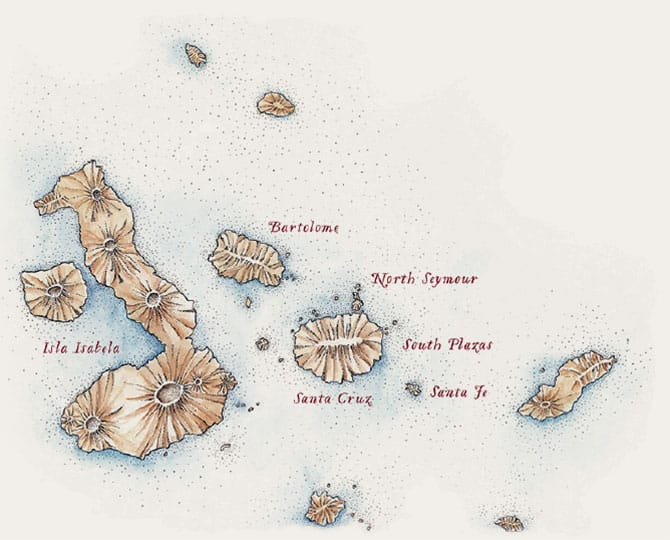
In our guide to planning a Galapagos vacation, we answer some of your most frequently asked questions. We recommend you use the table of contents (desktop only) to navigate the content.
Geography and Ownership
Where are the Galapagos Islands?
The Galapagos Islands are located in the Pacific Ocean, 600 miles / 1000 km off the coast of Ecuador in South America. Explore the Galapagos Islands on Google Earth.
Who owns the Galapagos Islands?
The Galapagos Islands belong to the Republic of Ecuador in South America.
How many Galapagos Islands are there?
There are 13 main Galapagos Islands, only 4 of which are populated (Santa, Cruz, San Cristobal, Isabela and Floreana) and hundreds of islets and rocky outcrops. See: Our Guide To The Galapagos Islands
Visiting and Travel Requirements
Do I need a travel visa for Ecuador and the Galapagos?
Visa requirements vary by nationality and sometimes change. If you are planning on visiting Ecuador and the Galapagos Islands we advise you to check with your own government travel advisory center for the latest information.
At the time that this content was published, these were the requirements for US, UK and many European citizens:
Tourist Visa Required: No, for stays less than 90 days, in any 12-month period.
Blank Passport Pages: 1 page per stamp
Passport Validity: 6 months
Vaccinations: None
Are there baggage allowances or restrictions?
There are luggage restrictions for flights to Galapagos: a maximum of 23kg and one piece of luggage per person, plus cabin baggage. 64kg is permitted in Business Class (the only airline that offers Business Class is Avianca).
Propeller planes operate within the Galapagos and connect the islands of Baltra, Isabela, and San Cristobal. If your itinerary involves an island-hopping flight please note that the maximum allowance is 11kg.
For Isabela Island extensions, our rate includes up to 23kg (50Ib) free of charge. If you happen to have more baggage with you, you will have to pay the extra fee.
There are storage facilities at Baltra airport, and you can also leave it with us at the camp for an extra fee. Please check with us during the booking process
Due to the fragile ecosystem there are border controls. Expect your plane to be fumigated, your shoes to be cleaned between islands, and do not bring food into the Galapagos. If you have special requirements contact us for advice.
Please check the documentation you receive from your Safari Designer for the latest advice.
Environment and Conservation
How much of the Galapagos is National Park?
97% of the archipelago’s islands is designated a national park. This area covers just over 3000 squared miles. Human settlements are concentrated on the remaining 3%. There are strict rules about visiting the areas on islands that have been designated as visitor sites by the national park authorities.
The oceanic area surrounding the Galapagos is one of the largest marine reserves in the world.
Does the Galapagos National Park have any rules?
Yes, many! No person can set foot in the visitor sites of the Galapagos National Park unless accompanied by a certified naturalist guide. Their job is to enforce all Galapagos National Park regulations and there are steep penalties for breaking the rules and regulations of the Park. Do follow and obey your guide’s discretion.
Why are the Galapagos Islands so special?
“In a lifetime making natural history films I’ve been to many wonderful places. But none more extraordinary than here. The Galapagos Islands” – David Attenborough, in his documentary series, The Galapagos With David Attenborough
The Galapagos Islands have a variety of singular ecosystems, in which species that can’t be found anywhere else on this earth have adapted and evolved, thanks to unique environmental conditions. The islands are located at a juncture in the Pacific Ocean where a number of major ocean currents meet. It is the nature of these currents that makes this oceanic spot so rich in nutrients and in turn, wildlife.
See: When is the best time to visit the Galapagos Islands and An Introduction to the Galapagos Islands.
Local Information
What time zone are the Galapagos Islands in?
The Galápagos Islands are in the Galapagos Time Zone (GALT), which is UTC-6. Note: the Galapagos Islands are one hour behind mainland Ecuador.
No Daylight Saving Time: Unlike many parts of the United States, the Galapagos Islands do not observe Daylight Saving Time. They remain on GALT (UTC-6) throughout the year.
Comparison with U.S. Time Zones:
- When the U.S. is on Daylight Saving Time (second Sunday in March to the first Sunday in November), the Galapagos Islands are one hour behind the Central Daylight Time (CDT).
- When the U.S. is on Standard Time (rest of the year), the time in the Galapagos Islands aligns exactly with Central Standard Time (CST).
What languages are spoken in the Galapagos Islands and on Ecuador mainland?
Ecuador’s official language is Spanish, but English is widely spoken by guides and staff at Galapagos Safari Camp.
In the Andes on the mainland various dialects of Quechua are spoken and in the Amazon several indigenous languages are spoken.
All our guides are proficient in English. Upon request and at an extra cost we can assign guides who are fluent in other languages.
What currency is accepted in the Galapagos?
The monetary unit of Ecuador is the US Dollar.
Are ATMs available?
There are ATMs throughout Ecuador and on Santa Cruz Island in Puerto Ayora. Though many places accept major credit cards, it is advisable to carry enough cash on hand for general expenses and tips. Your Safari Designer can advise you on what you may need cash for.
Health and Safety
What kind of travel insurance do I need?
All passengers should have full medical insurance and trip-cancellation insurance. Be mindful that the Galapagos is a remote location with very basic medical facilities at hand. Emergency medical evacuation can cost upwards of tens of thousands of dollars. Your insurance company should be able to assist you with the best options for your trip.
What vaccinations/immunizations do I need for Ecuador?
Not required for entry to the Galapagos Islands, but check if you are travelling in mainland Ecuador or other South American countries. As government legislations change, we always recommend checking with your doctor for the latest information.
How safe are the Galapagos Islands for tourists?
The Galapagos Islands are historically a very safe tourist destination. In case of regional unrest, we advise you to contact your own government travel advisory sites for the latest information.
How safe is it to drink tap water in the Galapagos?
We don’t recommend drinking water from the tap in the Galapagos Islands. At Galapagos Safari Camp, we provide our guests with drinking water, together with water flasks to take on excursions.
Where is the nearest hospital/medical facility in the Galapagos?
On Santa Cruz, where Galapagos Safari Camp is based, there is a hospital in Puerto Ayora and a local clinic for minor ailments. The local pharmacies in Puerto Ayora are also well stocked.
If on a cruise ship, unless there’s a doctor on-board your cruise vessel, you can be a long way from the nearest medical treatment.
If your insurance covers an air ambulance evacuation please note that the evacuation can only be done within the operating hours of the airports in the Galapagos. We strongly recommend checking your policy, and what it covers in the Galapagos, with your travel insurance company.
